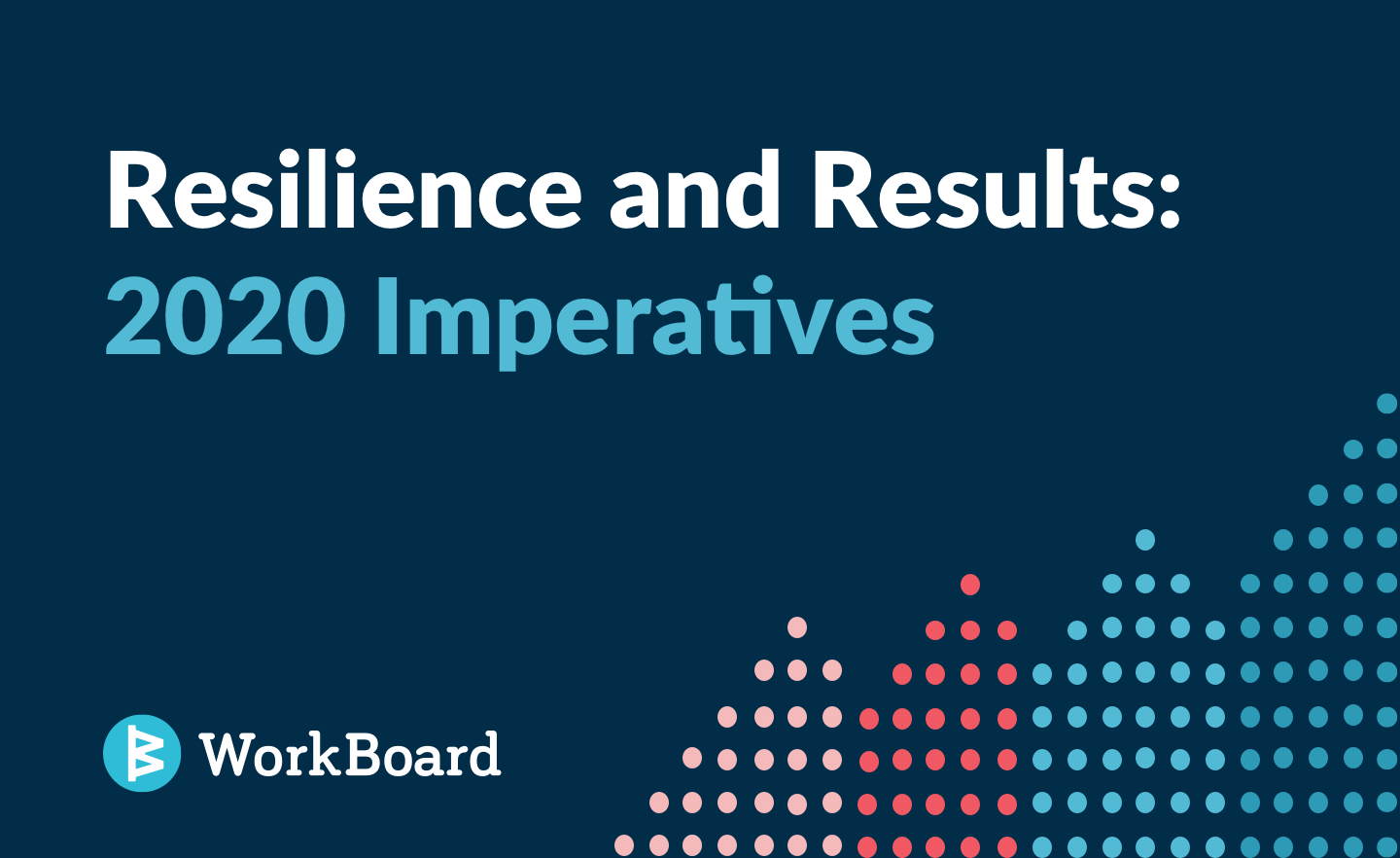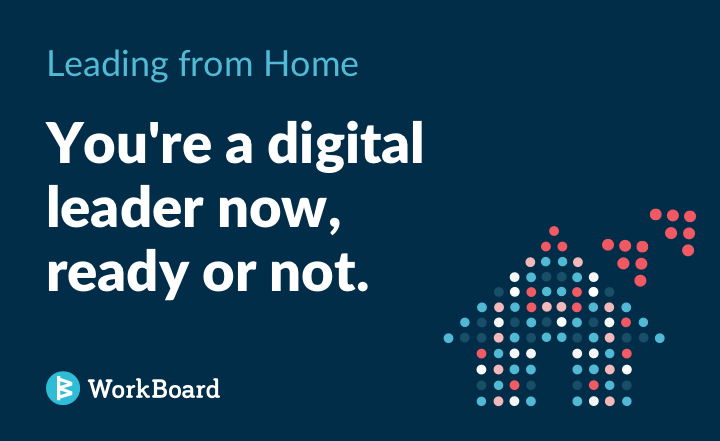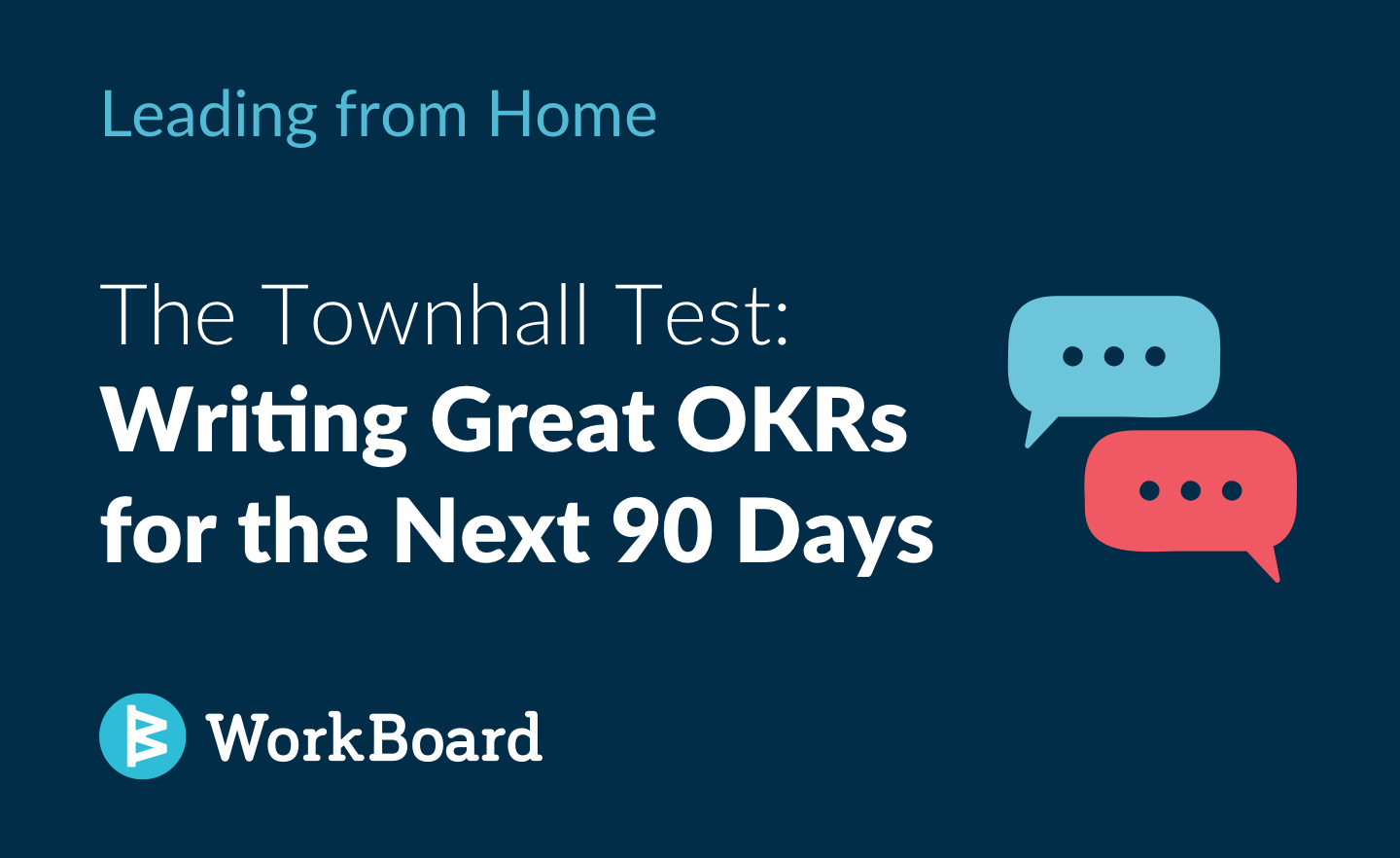
Today, every chief executive is focused on two 2020 imperatives: Resilience and results. While executives have little control over demand resilience, they have direct control over operational resilience and results focus. In Resilience Thinking, scientists Brian Walker and David Salt describe resilience as “the capacity of a system to absorb disturbance and still retain its basic function and structure.” The enterprise test is whether it can shift where work is done and still drive its best potential results despite employee diaspora and turmoil.
To adapt and respond to new realities, organizations need three fundamental capabilities:
- The company needs to shift strategic priorities quarterly and get everyone re-aligned.
- People need a source of truth on current strategic priorities for their organization, business function and group.
- Team members need to work cohesively yet independently to be productive without proximity.
Organizations will need to exercise these capabilities long after Spring 2020, so many are adopting platform-enabled Objectives and Key Results (OKRs) to close these resilience gaps and optimize business outcomes.
Respond & Run Faster
OKRs are a technique for aligning objectives, defining desired results and measuring progress in shorter, focused intervals. Made popular by startups, large enterprises have adopted them to respond to dynamic markets, close strategy alignment gaps and engage more of their organization in strategy execution. An OKR platform provides enterprise-wide transparency on what each team is trying to achieve and its progress to plan, automates management reporting like QBRs and operating reviews and connects company outcomes with team output.
Organizations like Comcast, Microsoft, Cisco, Zuora, GHX and others that had an OKR process and platform before the crisis were able to quickly adjust strategic priorities, align teams and shift efforts in March 2020. Moreover, they can see where re-alignment breaks down and drive focus faster. Fortuitous at crisis onset, it will also help them navigate through and out of it. Tony Werner, president of Comcast Technology Products & Experience, says his process and platform “have helped amplify and accelerate results.”
The core tenets of a good OKR practice include:
- Quarterly iteration on strategic priorities. Quarterly objectives and key results replace annual strategic plans that quickly get stale. Aligning and re-aligning on near-term results drives higher focus, fosters a fast-learning organization and improves overall outcomes.
- Explicit rather than implied alignment. The OKR process makes alignment an overt step in a company’s operating model. OKRs are localized to each team, not just leadership teams (typically less than 2 percent of your workforce) so more of the organization’s capacity is leveraged against its strategy. Broad alignment is the source of startups’ speed but is often the Achilles’ heel of large enterprises.
- Best possible results. The process helps teams define, align and organize to achieve their best possible results. It rallies people to greatness rather than mediocrity. By spending three hours aligning on objectives and key results at the beginning of the quarter, people can focus on what matters for the 500 hours they spend in the quarter.
- Speed as a competitive advantage. OKRs focus effort on outcomes that matter most in the next 90 days, and platforms provide a continuous picture of the gap to plan. That visibility helps teams identify and resolve risks earlier in the quarter.
- Teams are the engine of value creation. OKRs enable functional and cross-functional teams to clarify what they want to achieve and how success is measured. Working groups, pods and squads can be more self-directed, aligned and accountable.
To drive productivity without proximity, employees need the ability to make progress and good decisions independently. Clarity on intended outcomes and transparency on commitments, actions and decisions helps interdependent colleagues be effective asynchronously. Automating and accelerating management reporting is imperative now as well because leaders need self-service data in the moment—and management-by-meeting has become exhausting. The future of work is here, and it requires the ability to work with autonomy, get information and feedback digitally and circulate business facts in more automated ways.
It’s All Digital Now
Operating drag that wasn’t visible in person or in growth climates will now be magnified. While the external situation is changing very quickly, you may find that your internal response isn’t changing fast enough. To drive your best results in difficult conditions, you’ll need to accelerate your operational response, iterate frequently on strategic priorities and mobilize everyone faster.
Fortunately, these can be accelerated and automated with proven, purpose-built OKR solutions. Zuora’s CEO Tien Tzou says, “A strong platform partner that provides expert coaching can help you unify the organization on OKRs and implement a platform in a few weeks.” Turn on the digital capacity to align, measure and optimize outcomes now—just in time to rally on the company’s best possible results for the second half of 2020.
Deidre Paknad is CEO of WorkBoard, a three-time founder and former IBM executive. To hear about OKRs at Microsoft, Cisco, IBM and others, visit workboard.com/customers.
This article was originally published in the May/June 2020 issue of Chief Executive Magazine.









